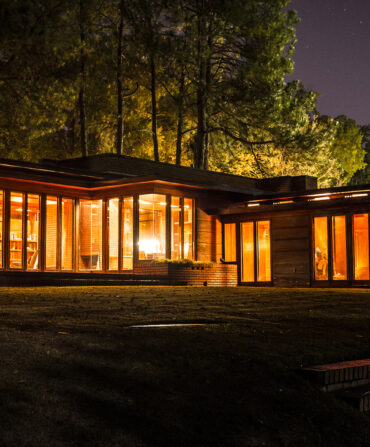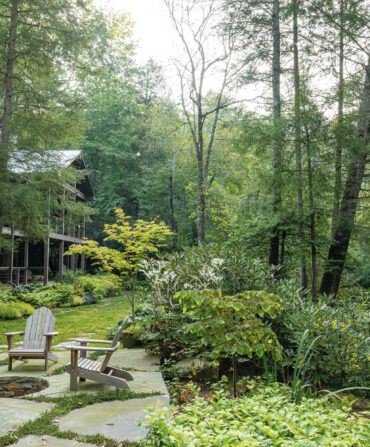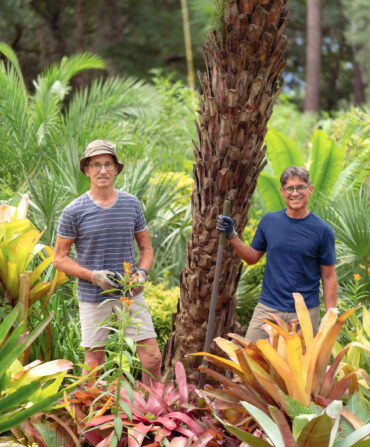In his professional life, musician Jim Mills spent fourteen years as the Grammy-winning, banjo-playing sideman to bluegrass great Ricky Skaggs. But in the inner circles of the music world, he’s even more famous for his banjo room, a walnut-paneled, 1,000-square-foot space in a house in Durham, North Carolina, that’s home to the world’s largest privately owned collection of Gibson flathead five-string Mastertone banjos made between 1930 and 1942.

Photo: Lissa Gotwals
Jim Mills with his new basset hound, Henry.
As a teenager growing up in Durham in the seventies, Mills idolized Earl Scruggs, who took radio by storm in 1945 and introduced an international audience not only to traditional bluegrass, but to the Mastertone as well. Gibson had churned out about two hundred or so, but the banjos didn’t catch on until Scruggs popularized the style. In 1979, Mills played his first Mastertone. “I knew what they were but had never seen one,” he says. “When I wrapped my hands around it and played, there was nothing else like it. The tone and power and volume they are known for blew away everything in the room. I recognized the sound I heard on all those Earl Scruggs records and realized there was no other way to achieve it than with the real thing.”
The five-string Mastertones were far less common than the popular four-string plectrum banjos of their day. Walter Carter, a vintage instrument expert at Gruhn Guitars in Nashville, Tennessee, says the Mastertones tend to emerge even less often than legendary prewar D-45 Martin guitars or Gibson Lloyd Loar mandolins of the 1920s. “So many parts on banjos are interchangeable,” Carter says. “You have to completely disassemble an instrument, and then you have to know what you’re looking for to spot a replica tone ring [the flat brass ring that sits below the head of the banjo], for example.” Although invisible when the banjo is fully assembled, the tone rings are closely analyzed because of the fullness they contribute to the Mastertone sound. It’s that sound that has earned these Mastertones the big money and a spot in the Country Music Hall of Fame and Museum. Says Mills: “I’ve torn them down and played on them and looked at them for so long, I can look at a tone ring from across the room and tell you whether it is right or not. It’s like handwriting. It’s either forged or it’s real.”

Photo: Lissa Gotwals
Mills’s prized prewar Gibson flathead five-string Mastertones.
It’s that sort of dedication to authenticity that qualifies Mills as the banjo king in this vintage instrument world. From mahogany-and-nickel designs to gold-plated and curly-maple models that sell for upwards of $200,000, Mills’s banjos are as much works of art as Stradivarius violins are. “These particular banjos are the first of their design, and everything that’s come along after owes its look and design to them,” Mills says.

Photo: Lissa Gotwals
The Mastertone guarantee.
While Mills finds most of his Mastertones in the areas they hail from (Tennessee, Virginia, and North and South Carolina), he has traveled as far as South Africa to collect them. “I was on tour at the time and only had four days to fly there and back,” he says. “The man had owned it since 1945, and he wanted me to see it in person. I still own that banjo, and it is one of my favorites.” But Mills’s room is about more than just banjos. The walls are lined with vintage photographs of Lester Flatt and Earl Scruggs as a duo, and every surface is covered in some form of old-time songbook or banjo part. In many ways, it is a museum of bluegrass itself. Every now and then, the likes of Steve Martin and Dixie Chick Emily Robison show up to buy one of the banjos Mills has for sale. But a piece has to go to the right buyer. “As a collector, I’m just a caretaker for these instruments,” he says. “I like to know I’m putting them in the hands of someone who will take care of them like I do.”








